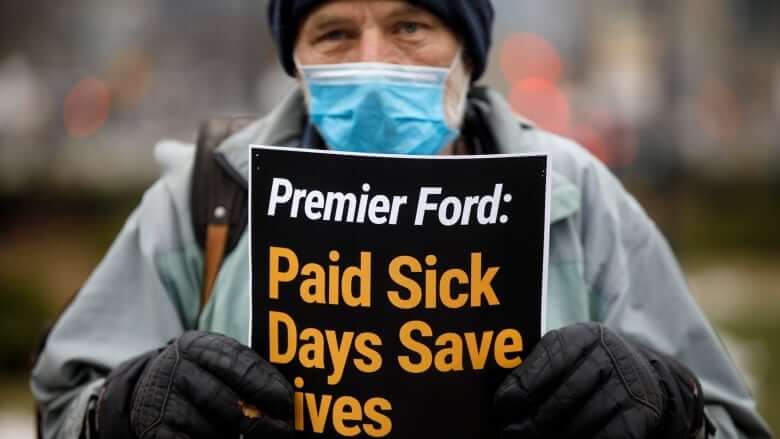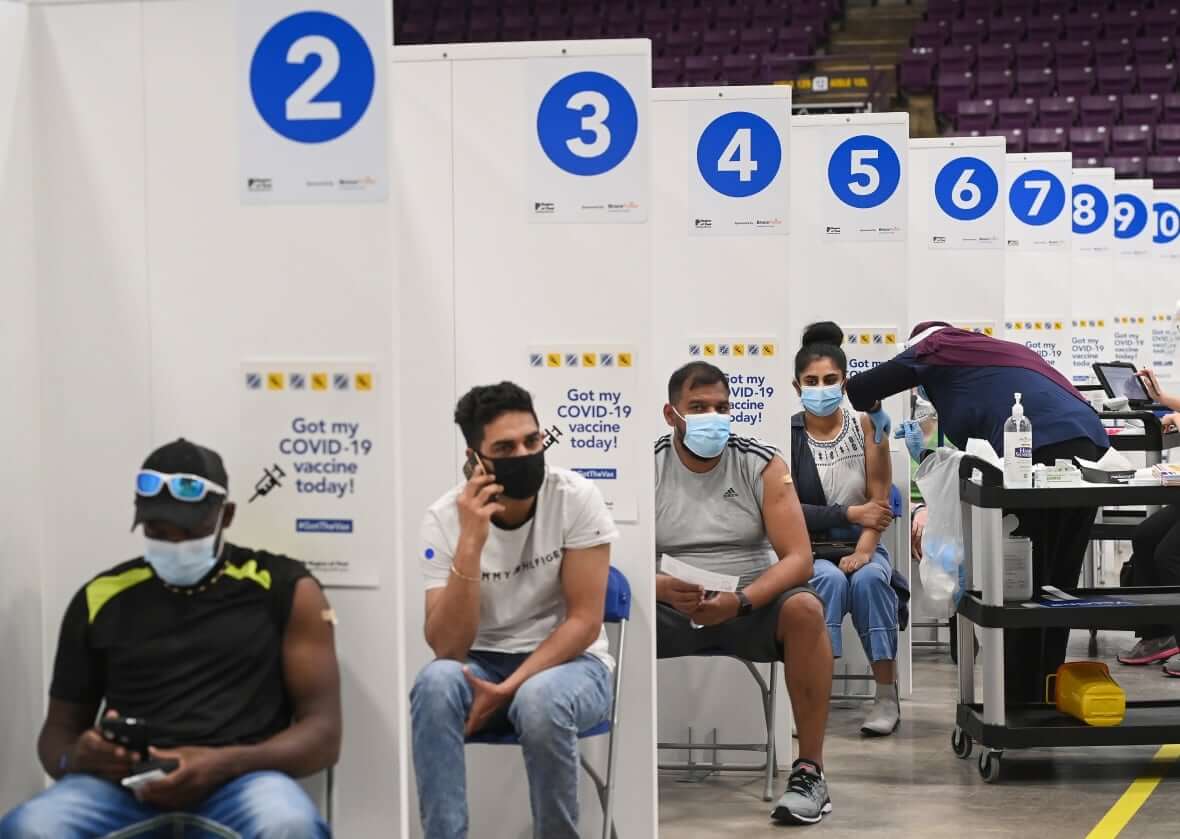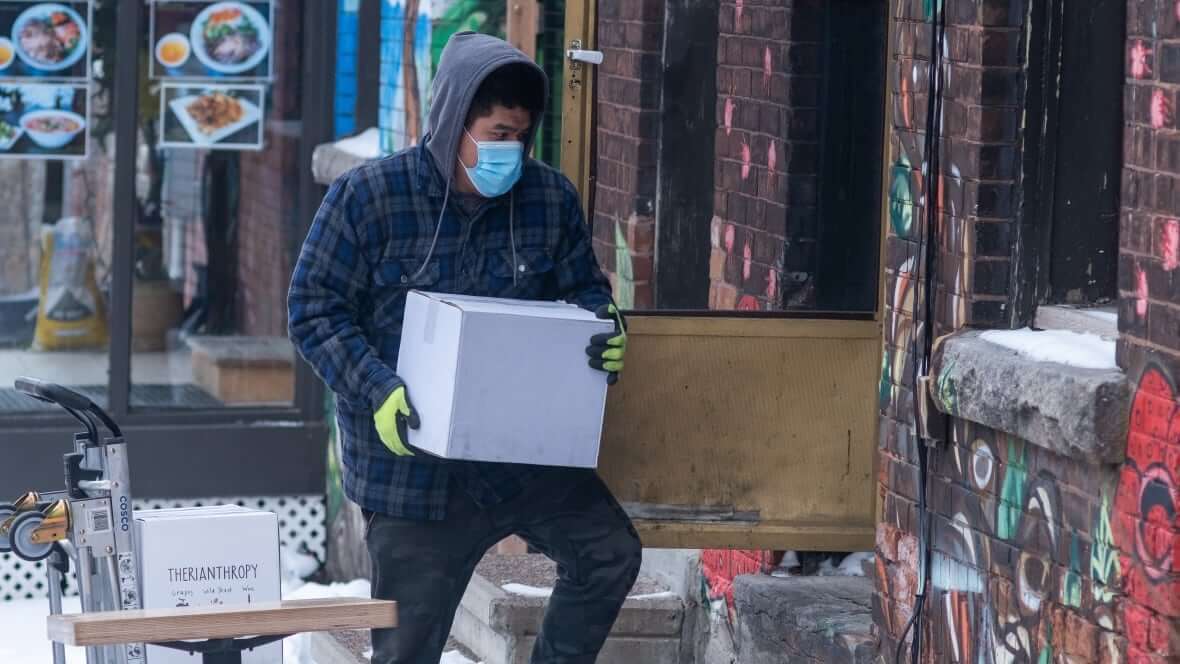Ontario’s COVID-19 paid sick day program getting little uptake

Ontario’s long-awaited paid sick day program — created to protect vulnerable workers from COVID-19 — has seen far less uptake than anticipated, new figures reveal.
Business owners band together to call on Ford government to legislate paid sick leave
Premier Doug Ford’s government announced the Ontario COVID-19 Worker Income Protection Benefit in late April, after the pandemic’s third wave was already receding.
The government reimburses employers for paying their workers up to $200 per day for as many as three days if they can’t do their job for any range of reasons related to COVID-19, including getting tested, caring for sick family members, and suffering side effects from vaccination.
As of July 16, claims had been submitted for 39,887 employees since the program took effect, with an average of 1.8 days claimed per worker, according to published provincial numbers.
To put those numbers in context: over the same 13-week period, Ontario reported more than 126,000 confirmed new cases of COVID-19 and administered some 13 million doses of vaccine.The program is due to end on Sept. 25.

Demand for the sick pay benefit appears to be vastly lower than the government expected. When the program was introduced, provincial officials estimated the cost at $750 million to $1.5 billion.
The claims made as of Wednesday — just past the mid-way point of the time-limited program — total $13.2 million. That’s less than 2 per cent of the low-end estimate.
The number of claims so far may not fully reflect the number of sick days that will eventually be reimbursed because employers can wait to apply for reimbursement up to four months after the worker was paid.
Updated figures provided to CBC News on Thursday by Ontario’s MInistry of Labour, Training and Skills Development suggest use of the program may be accelerating. For the week from July 8 to 14, employers submitted $2.2 million in claims. From July 15 to 21, submitted claims totalled $3.1 million.
The Ford government brought in the sick pay program only after sustained pressure from health experts and labour organizations, and more than a year after the pandemic began.

A doctor who belongs to one of the advocacy groups that pushed for paid sick days says the figures do not suggest the program is a flop.
“We have to recognize that the program was implemented at the tail end of wave three of the pandemic, at a time when vaccine uptake was higher, at a time also when we were seeing COVID-19 numbers drastically go down,” said Gaibrie Stephen, an emergency physician in Peel region and a member of the advocacy group Decent Work and Health Network.
He said the sick pay claims so far amount to “about 80,000 [paid] days that otherwise wouldn’t have existed, which we should recognize as a small win.”
Advocates long argued that paid sick days are a crucial element to slowing the spread of an infectious disease such as COVID-19. The rationale is that people are more likely to bring infections into the workplace if they face losing pay for taking a day off sick.
Roughly half of the workforce does not have access to employer-paid sick days, according to Statistics Canada.

While Stephen is wary of drawing conclusions from the sick pay claims figures too quickly, he said they seem to indicate that predictions workers would flagrantly abuse the benefit were inaccurate.
The Canadian Federation of Independent Business surveyed its Ontario members last month about the provincial paid sick days for COVID-19. Among the 1,700 companies that responded, only 19 per cent said any employees had made use of the program.
However, CFIB found that uptake was markedly higher among employers that were operating as essential services, such as manufacturing (36 per cent) and construction (30 per cent.)
“This rolled out in a period where a lot of small businesses were closed, right in the middle of the third wave,” said Ryan Mallough, the group’s senior director of provincial affairs for Ontario.
“It could have been very different if all small businesses were open and you had a full workforce coming in daily,” he said in an interview Thursday.
But with many small retailers, gyms and restaurants fully or partially shut down in Ontario until this month, many employees weren’t working.
“[There are] just not a lot of opportunities to take advantage of a sick day when there’s no day to take off sick from,” Mallough said,








Redes Sociais - Comentários